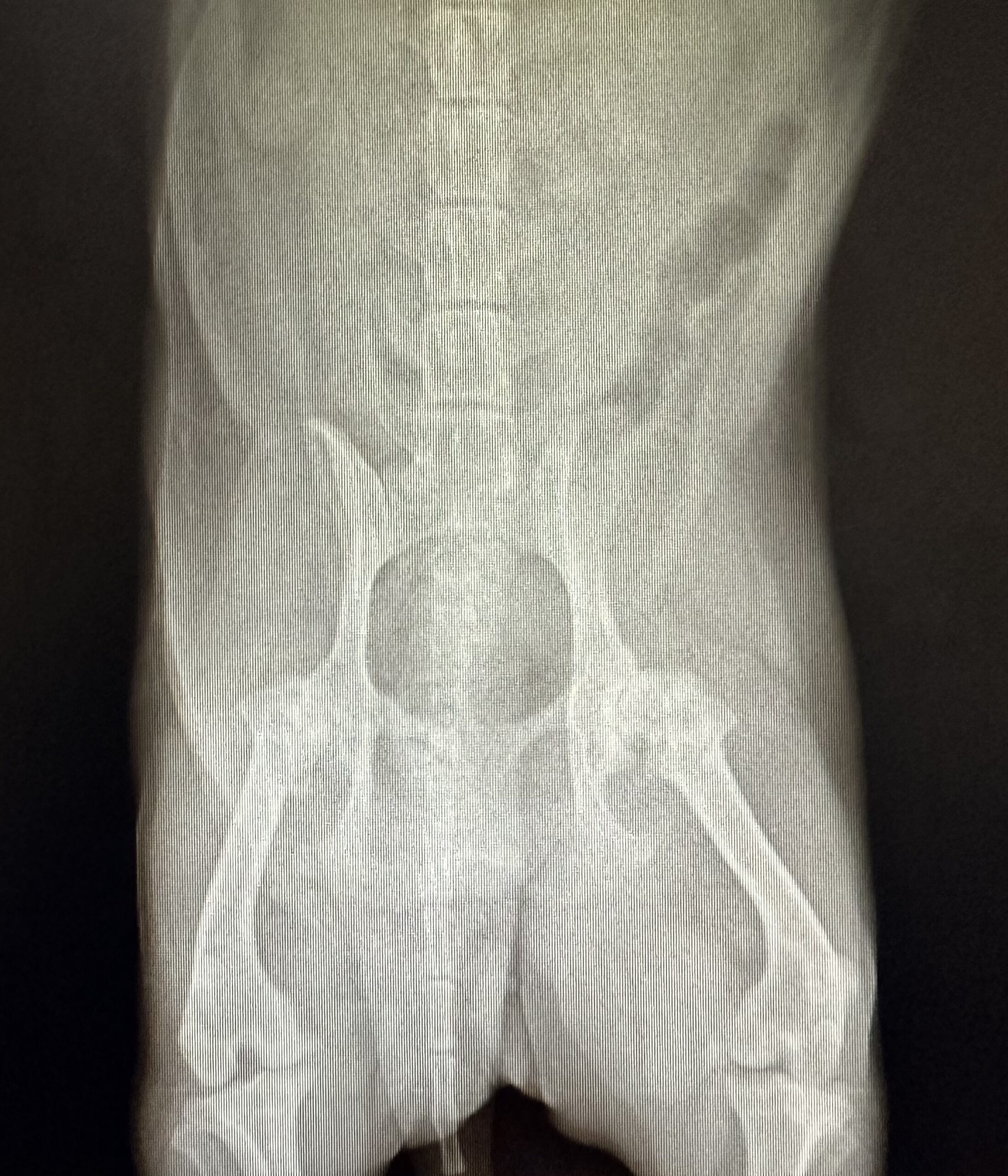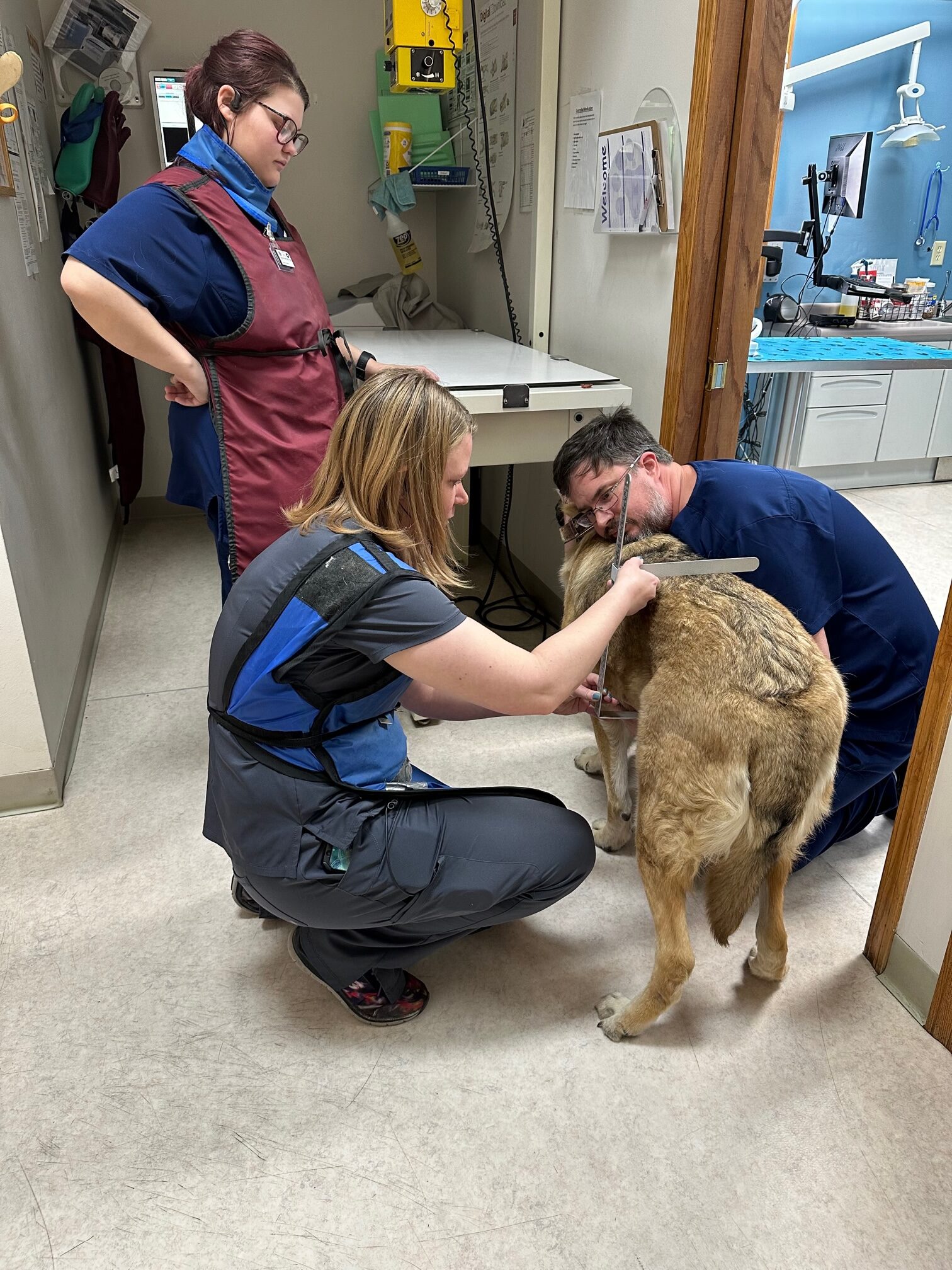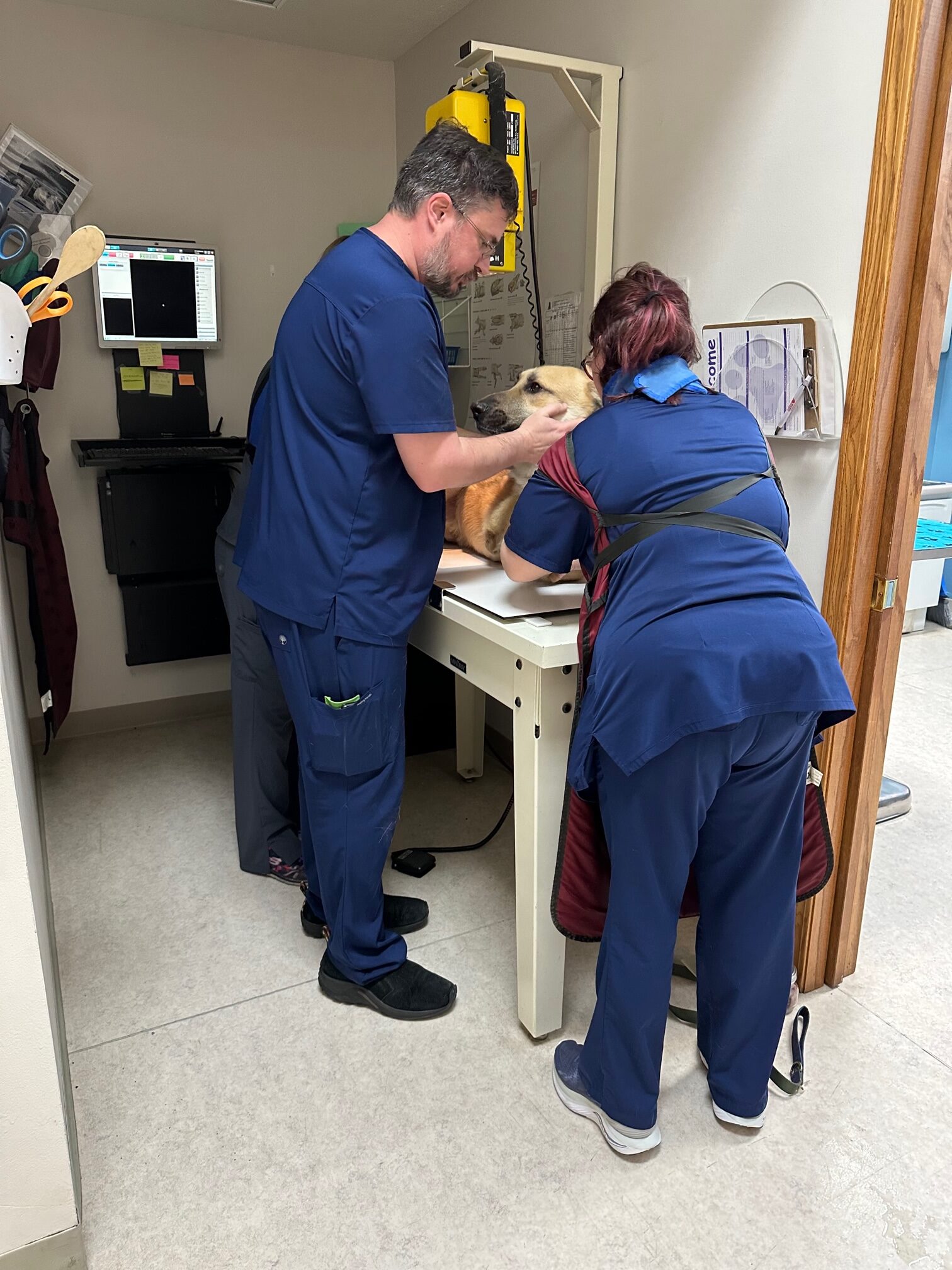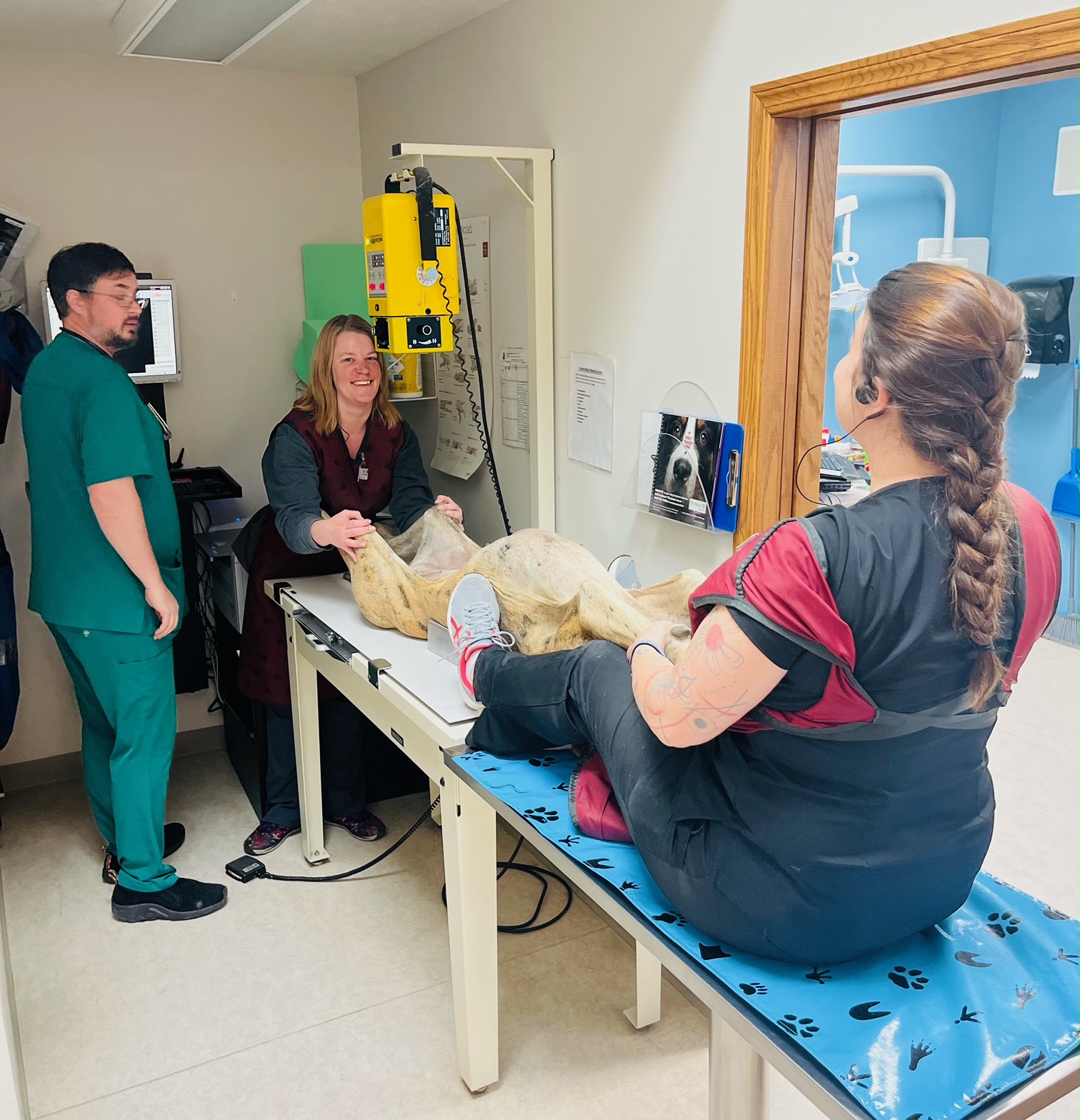Contact Us!
Hip Dysplasia
Animal Doctor provides hip dysplasia diagnostics and medical treatment options for pets. We accept referrals and provide second opinions.
Description: HIP DYSPLASIA is a common developmental and inherited orthopedic disorder involving malformation of the hip joint. This malformation will lead to increased laxity in the joint and formation of degenerative joint disease (arthritis). Most commonly large breed dogs (Labrador retriever, German Shepherd, Rottweiler, Mastiff, etc.) are affected, however, small compact breeds (Pug, Bulldog, etc.) and cats can also be affected by hip dysplasia.
Symptoms & What to look for: Hips swaying while walking, bunny hopping, narrow based stance, decreased muscle mass in the hind legs, difficulty getting up or lying down, limping on one or both of the hind legs




What questions do we ask?
-
Is there a history of hind leg problems? Which leg is affected?
-
Is there a history of a first order relative (parent or sibling) with hip dysplasia?
-
Are you planning on spaying or neutering?
What are the steps we take to treat your pet?
-
Depending on several factors (age, severity of the condition, etc.) surgical correction of the malformed hip joint may be recommended.
-
Treatment generally focuses on reducing inflammation in the abnormal joint and maintaining the comfort of your pet. A multimodal approach is sometimes required
Animal Doctor Hip Dysplasia potential treatment plans?
Joint supplementation: dasuquin, synovi chews, omega fatty acids
Nonsteroidal anti-inflammatory medication (NSAID): deracoxib, carprofen, galliprant, meloxicam
Other analgesic medication: gabapentin, tramadol
Polysulfated Glycosaminoglycan: Adequan injections
It is strongly recommended to spay/neuter your pet if they are diagnosed with hip dysplasia due to the hereditary nature of the condition.
How do we arrive at a diagnosis and appropriate treatment plan?
-
A thorough examination of your pet will be performed to identify abnormalities in range of motion, muscle mass and gait.
-
Radiographs (x-rays) is the primary method used for diagnosing hip dysplasia. Sedation is required to position your pet appropriately and avoid putting your pet in any discomfort.
-
Submission of radiographs to the Orthopedic Foundation of America (OFA). This is most commonly used to screen breeding animals. Certification is available for pets 2 years of age or older. A preliminary report is available for pets earlier than 2 years. Results are reported as one of seven classifications from excellent to severe hip dysplasia
What results have we seen



What are the risks if hip dysplasia is left untreated?
-
Hip Dysplasia can lead to osteoarthritis and worsening lameness. With time, your pet can lose the ability to stand and walk, which can ultimately lead to euthanasia due to a poor quality of life.
Animal Doctor Provider
Dr. Nicholas Klosterman has 12 years of experience in diagnosing hip dysplasia.



